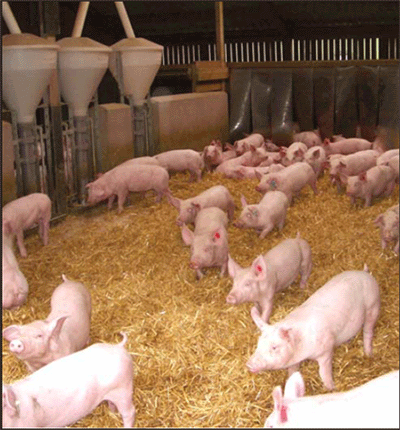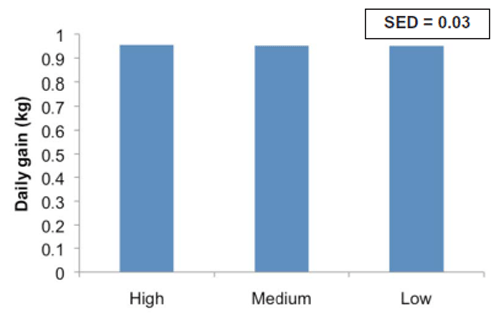



Reducing Phosphorus Levels in Grower and Finisher Diets
Dietary phosphorus can be reduced below the current commercial standards without negative effects on pig health and performance, whilst at the same time reducing diffuse phosphorus levels in the manure and effluent, and consequently reducing phosphorus load to the environment, according to BPEX in No. 15 in the 'Research into Action' series.Background
The aim of the project was to demonstrate that dietary phosphorus (P) can be reduced below the current commercial standards without negative effects on pig health and performance, whilst at the same time reducing diffuse P levels in the manure and effluent, and consequently reducing P load to the environment.
Benefits
- reduced pollution of P to the environment and
- reduced need to add additional, costly P to the diet.
The Trial
Three diets, all including phytase enzymes, with differing levels of P, were fed to grower and finisher pigs in two different farms. The trial was repeated over two batches. All pigs were housed in indoor straw pens distributed over three buildings on each farm with each building supplying one of the diets.
The levels of total P in the different diets for the growers were:
- Low diet: 3.76g P per kg feed
- Medium diet: 4.03g P per kg feed
- High diet: 4.29g per kg feed
The levels of total P for the finishers were:
- Low diet: 3.34g P per kg feed
- Medium diet: 3.84g P per kg feed
- High diet: 4.09g P per kg feed
The High diets represented the current industry standard. The animals were weighed upon entry and again at slaughter. Other performance measures taken were lean meat percentage per individual and feed intake per building. Muck and faecal samples were taken every two weeks for analysis of P levels, indicative of the pressure on the environment through excreta. Furthermore, health records were kept on disease and deaths occurring throughout the trial.
Results
Performance
As expected, average daily gain, lean meat percentage and feed conversion of pigs differed on different farms and between batches, but these differences did not relate to the amount of phosphorous in the pig’s diet (P>0.1). The differences between farms and batches caused a variation that was larger than any potential dietary effect. Overall, the farm trials showed that pig performance was not compromised when the P content of growing and finishing diets was reduced by around three and five per cent below normal commercial levels. (The treatment effects are depicted in Figures 1–3).
Environment
Reducing the input of P through the diets is expected to affect the level of output through excreta, thereby reducing the environmental pollution. The data on this are currently being analysed and will be presented in the future.

Conclusion
There were no adverse effects on the performance of the grower and finisher pigs that were fed the lower levels of P. This reduces the need of adding additional P into the diet, which can reduce costs as well as decrease the expected pressure of P pollution onto the environment.



Partners
This project is sponsored by Defra and is in collaboration between Newcastle University and the Industry: BQP (Dalehead Foods) and BPEX.
March 2013








